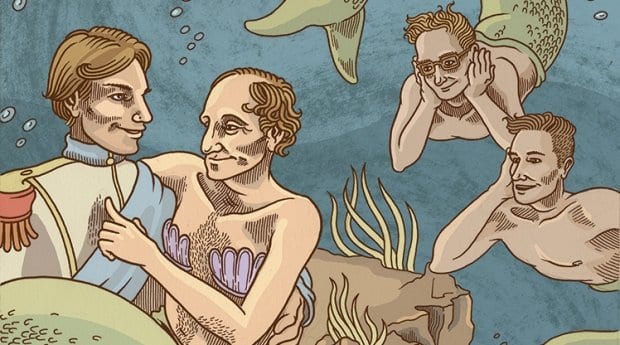When I was a silly, wet 16-year-old, I had a much older lover. He was poetic and went on and on about unrequited love. He didn’t think I could really love him because of the age difference, and he sort of preferred it that way, so long as I allowed him to rhapsodize over me. I didn’t really understand what he meant and decided I would always let myself love only people who loved me back. Now that I’m 28, I think I understand more of what my friend meant. I still think it’s unwise to seek unreciprocated love — it’s so much nicer when somebody loves you back — but falling for someone who doesn’t love you back doesn’t have to be a desperate, lonely feeling, or even a one-sided one. More recently, I fell in love with somebody who didn’t love me back — I couldn’t help myself — but he didn’t push me away. He loved me so much as a friend that he was willing to deal with my extra, romantic feelings. In a way, he showed me as much love as I showed him, just by letting me be in love with him.
It all reminds me a bit of Hans Christian Andersen, who was born in 1805 in Odense, Denmark. His parents were poor: his father a shoemaker, his mother an alcoholic laundress. He ached to escape his dismal home life, and at age 14 or 15 he moved to Copenhagen to become an actor. Over the next 10 years he attempted to make his mark however he could, trying ballet, singing and playwriting, but his greatest success came from the fairy tales he published in 1835: The Tinderbox, Little Claus and Big Claus, Little Ida’s Flowers and The Princess and the Pea. These stories marked the beginning of his career and his fame. He went on to write such beloved works as The Steadfast Tin Soldier, The Ugly Duckling and The Little Mermaid.
It is generally accepted that many of Andersen’s fairy tales dealt with difficult personal issues. Some have argued that he is seen most clearly in The Ugly Duckling, because he was awkward, eccentric and sort of funny looking. A more interesting perspective is that he is the protagonist in The Little Mermaid. Andersen was probably bisexual and certainly had infatuations with men. Generally, these men were in some way unattainable, as the prince was unattainable to the mermaid (in the original tale, not the idyllic Disney version). Writing to the great love of his life, Edvard Collin, in 1835 or 1836, Andersen said, “our friendship is like ‘The Mysteries’; it should not be analyzed,” and “I long for you as though you were a beautiful Calabrian girl.” It is telling that Andersen wrote The Little Mermaid at the same time that his prince was marrying a woman. In his memoir Collin writes, “I found myself unable to respond to this love, and this caused the author much suffering.”
WB Pomeroy, a colleague of Alfred Kinsey, writes that when Kinsey was shown original Andersen manuscripts possessed by a scholar in Copenhagen, he “could say unequivocally that they were straight-out homosexual stories.” Regarding The Little Mermaid, Pomeroy writes, “Andersen could not tell the world of his own homosexual love for the people of the world, but the original manuscripts showed his feelings clearly.” Andersen probably never had sex with any of his love objects but instead expressed his infatuations in his stories, diaries and letters.
Andersen wrote many intimate letters to his close friend Karl Alexander, grand duke of Saxe-Weimar-Eisenbach (1818–1901). The following is a touching excerpt: “Yes, yes, my noble friend, I love you as a man can only love the noblest and best. This time I felt that you were still more ardent, more affectionate to me . . . when you took your cloak and threw it around me, it warmed not only my body, but made my heart glow still more ardently.”
Andersen probably never had the kind of intimate connection he wanted with Collin, but in a strange and weirdly touching twist, Collin and his wife, Henriette, consented to have themselves buried with Andersen (though they were later shifted to a different grave by Collin’s descendants).
History Boys appears in every issue of Xtra.


 Why you can trust Xtra
Why you can trust Xtra


